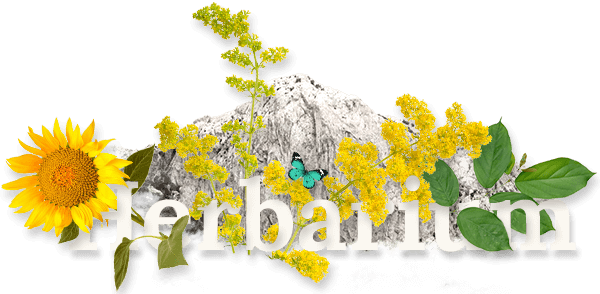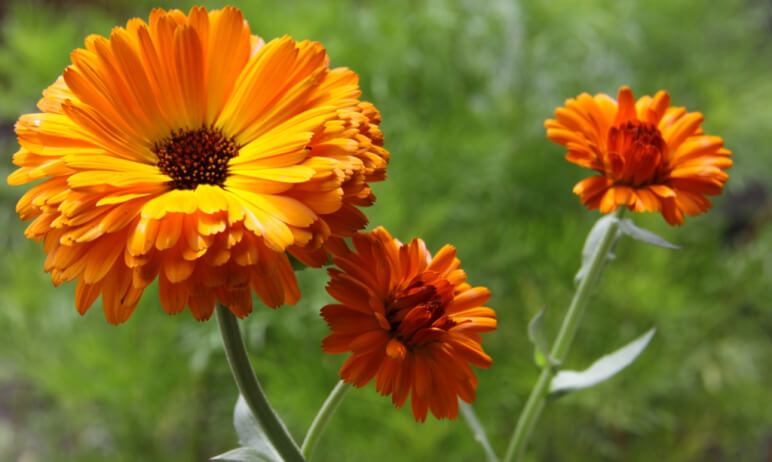Izradu internetske stranice sufinancirala je Europska unija u okviru operativnog programa Konkurentnost i kohezija iz Europskog fonda za regionalni razvoj.
saznajte više

MARIGOLD
lat. Calendula officinalis
Other names: Marigold, Holigold, Mary Bud, Pot Marigold, Calendula, Maidens of the Sun
Scroll
Habitat:
Marigold is a plant in the genus Calendula of the family Asteraceae. It is probably native to southern Europe, though its long history of cultivation makes its precise origin unknown, and it may possibly be of garden origin. It is also widely naturalised further north in Europe (north to southern England) and elsewhere in warm temperate regions of the world. Calendula officinalis is widely cultivated and can be grown easily in sunny locations in most kinds of soils. Although perennial, it is commonly treated as an annual, particularly in colder regions where its winter survival is poor and in hot summer locations where it also does not survive.
Plant descriprion:
Calendula officinalis is a short-lived aromatic herbaceous perennial, growing to 80 cm (31 in) tall, with sparsely branched lax or erect stems. The leaves are oblong-lanceolate, 5–17 cm (2–7 in) long, hairy on both sides, and with margins entire or occasionally waved or weakly toothed. The inflorescences are yellow, comprising a thick capitulum or flowerhead 4–7 cm diameter surrounded by two rows of hairy bracts; in the wild plant they have a single ring of ray florets surrounding the central disc florets. The disc florets are tubular and hermaphrodite,
and generally of a more intense orange-yellow colour than the female, tridentate, peripheral ray florets. The flowers may appear all year long where conditions are suitable. The fruit is a thorny curved achene.
Pharmaceutical use:
Calendula oil is an excellent antioxidant source. This beautiful orange and yellow oil is rich in carotenes and carotenoids – the compounds responsible for the plant’s radiant colour. These phytochemicals are pre-cursors to the production of antioxidant Vitamin A. Calendula’s most popular use from ancient times to modern day has been for healing the skin of wounds, burns, rashes, itchiness, bites and swelling. It has been found that Marigold has the ability to promote the growth of healthy new tissue, increase blood flow to the affected area, boost collagen production (which firms and strengthens skin), hydrate dry skin and speed up the process of skin repair following surgery or damage. Other uses have included treat-ment for colds, fevers, coughs, wounds, infections, rashes, and wasp and bee stings.
Cautions:
Please be aware that herbs, although natural can interact with certain medications, and that they may be ill advised to use under certain health conditions. Please consult a qualified health practitioner for cautions pertinent to you.
No therapeutic claim is made or intended for AZENA products. Information is for educational purposes only.




